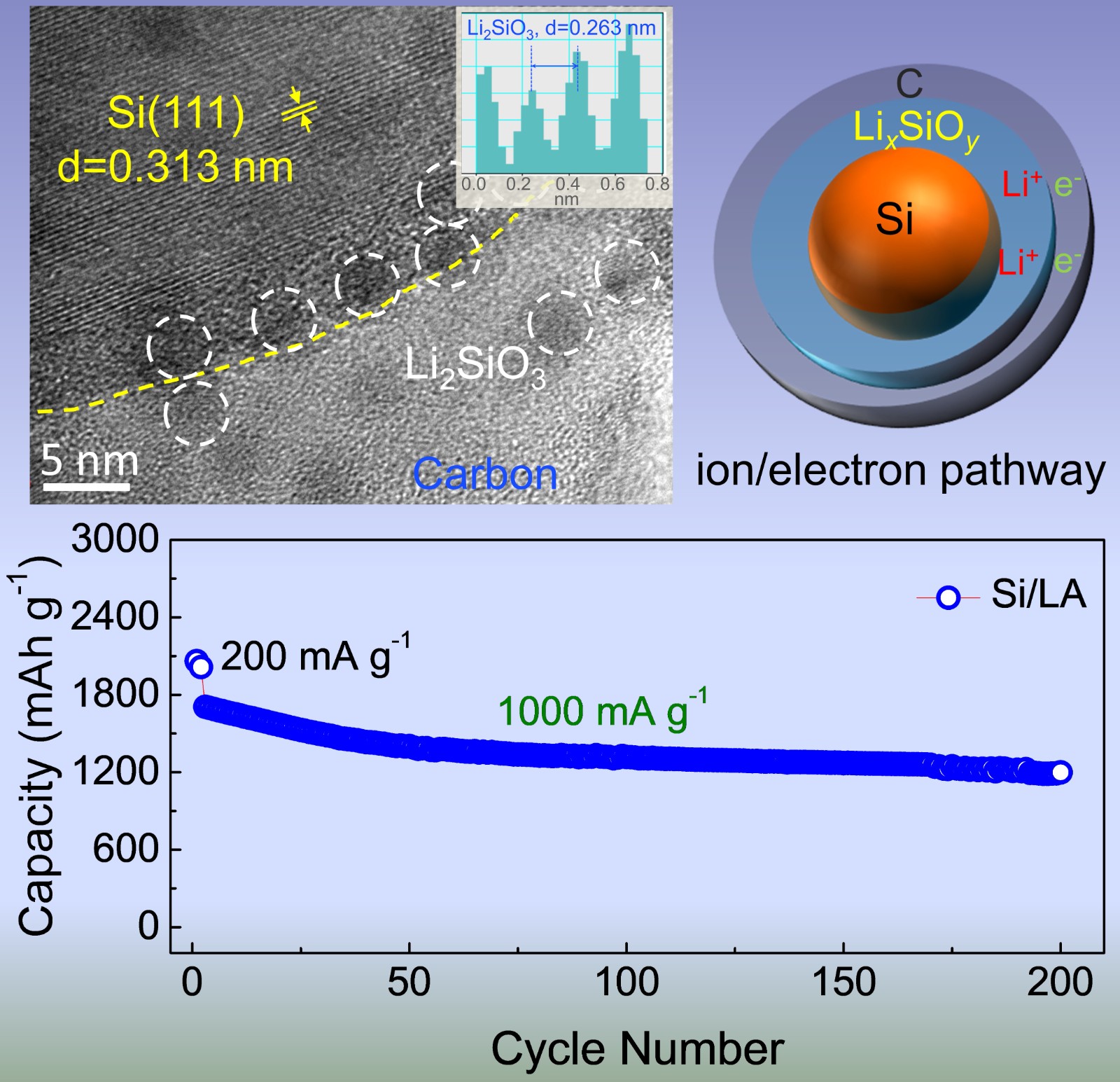周玉论文“Self-sacrificial-reaction guided formation of hierarchical electronic/ionic conductive shell enabling high-performance nano-silicon anode”被Chemical Engineering Journal接收发表
发布时间:2021-02-19
点击次数:
The inevitable surface oxidation of nano-Si inhibits its practical application as anode for lithium ion battery. Here, a hierarchical electronic/ionic conducting shell is smartly constructed by self-sacrificing reaction of native oxide layer on Si nanoparticles with lithium species. The morphological observation shows that Si nanoparticles are wrapped by lithium ionic conductor Li2SiO3 and amorphous carbon as the interlayer and outer layer, respectively. Such hierarchical structure not only provides a tight bond between Si and coating layer, but also improves the interfacial stability and conductivity of Si nanoparticles. Theoretical calculations demonstrate that the adsorption of Li2SiO3 on Si (111) and the adsorption of C on Si/Li2SiO3 are exothermic and spontaneous, and that the electron transfer and ionic conductivity at the surface of Si/Li2SiO3/C composite is enhanced. As a result, the as-prepared Si/Li2SiO3/C sample exhibits outstanding cycle stability and rate capability. By optimizing the lithium sources and thickness of native oxide layer, the resulted material exhibits 2106 mAh g-1 at 200 mA g-1, remains 1583 mA g-1 at 3000 mA g-1, and maintains 70.2% of capacity retention after 200 cycles. This work provides a robust strategy to promote the practical applications of Si nanoparticles as anode for lithium ion batteries.

